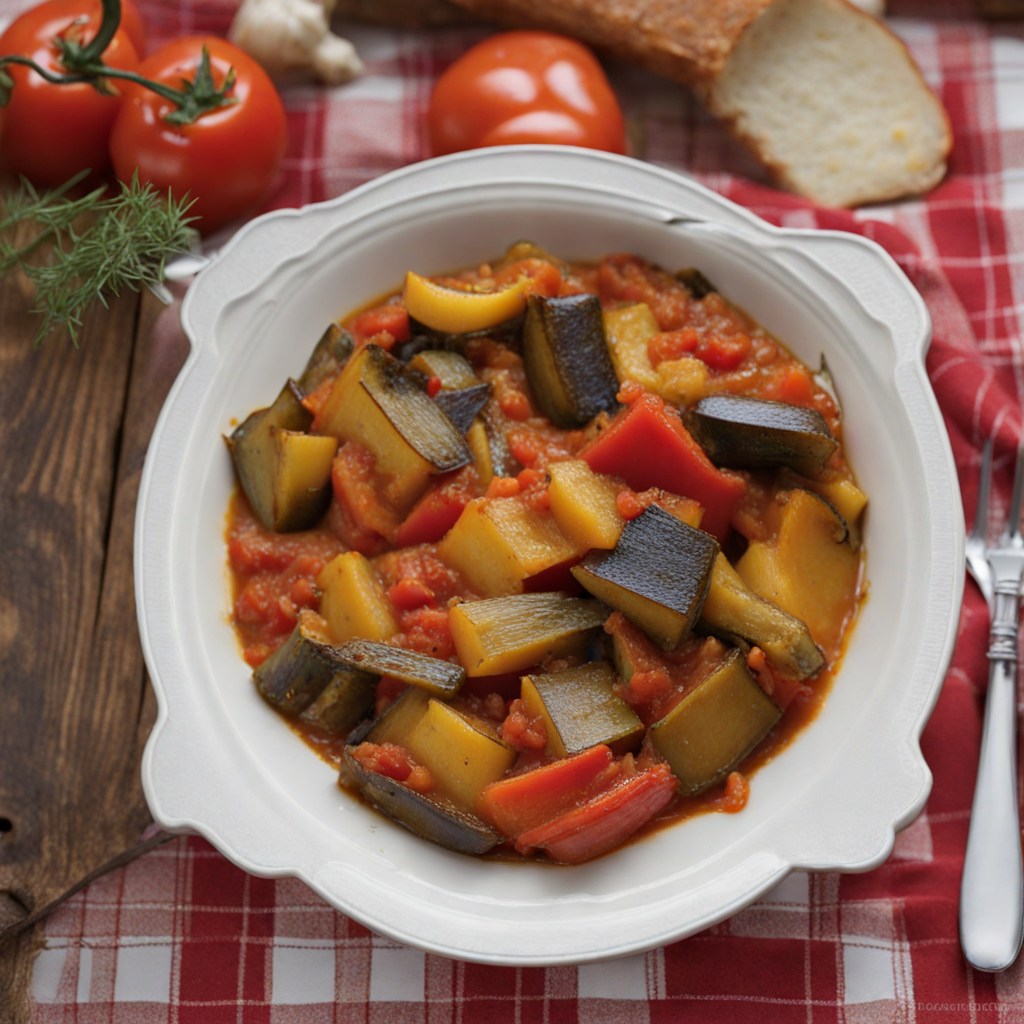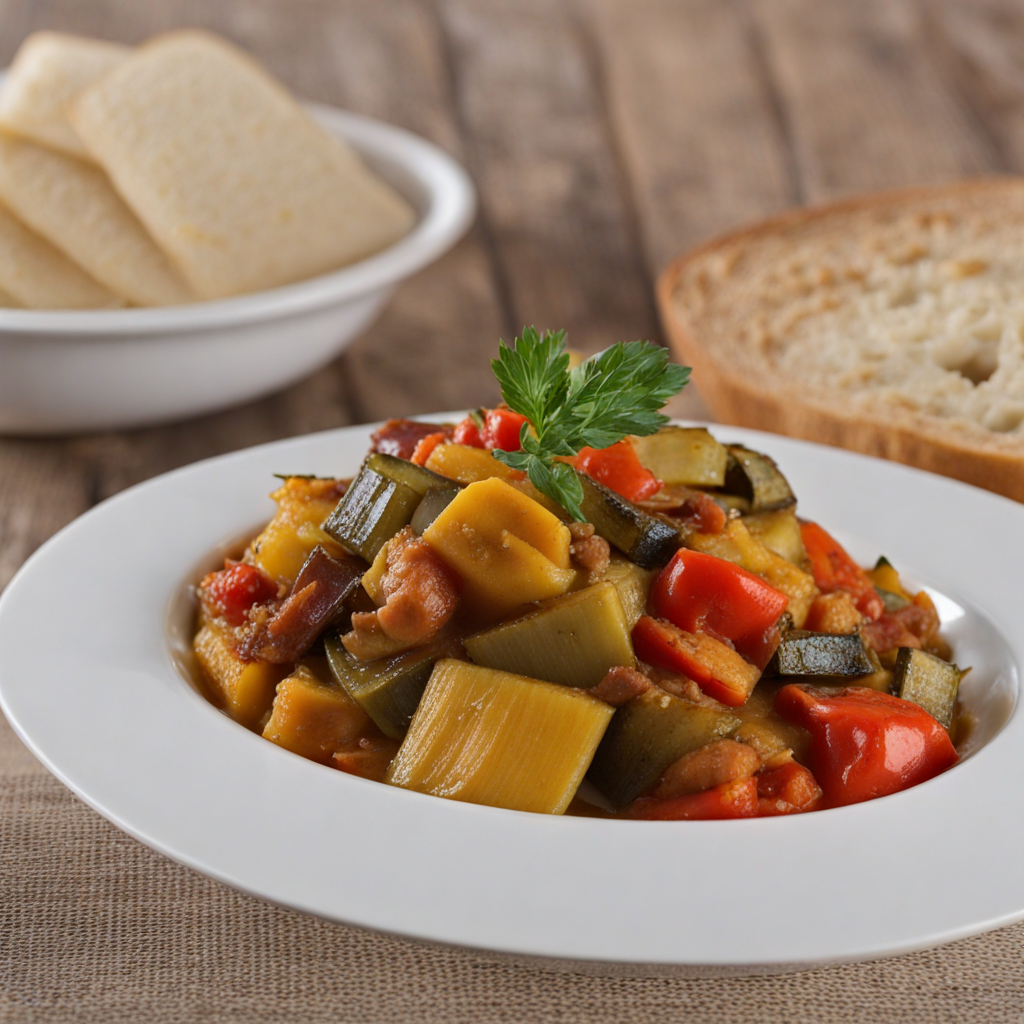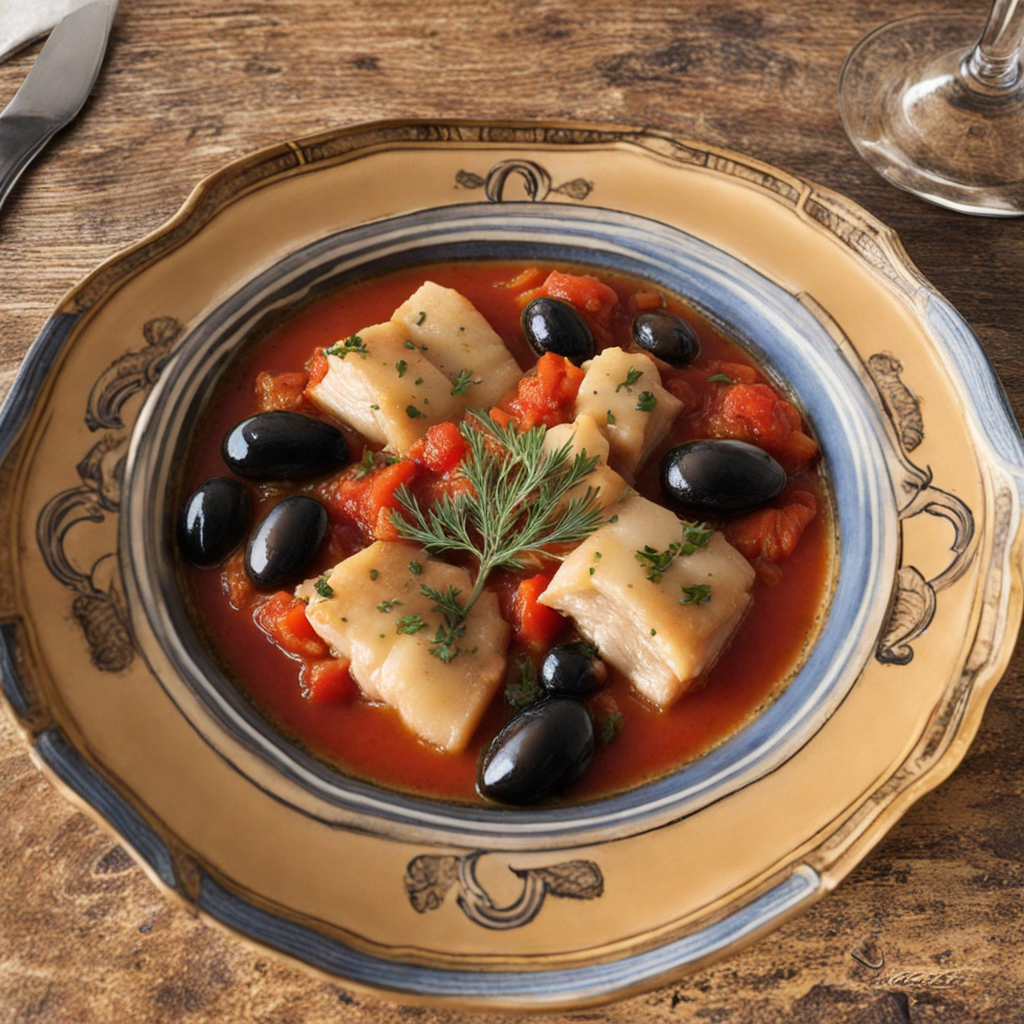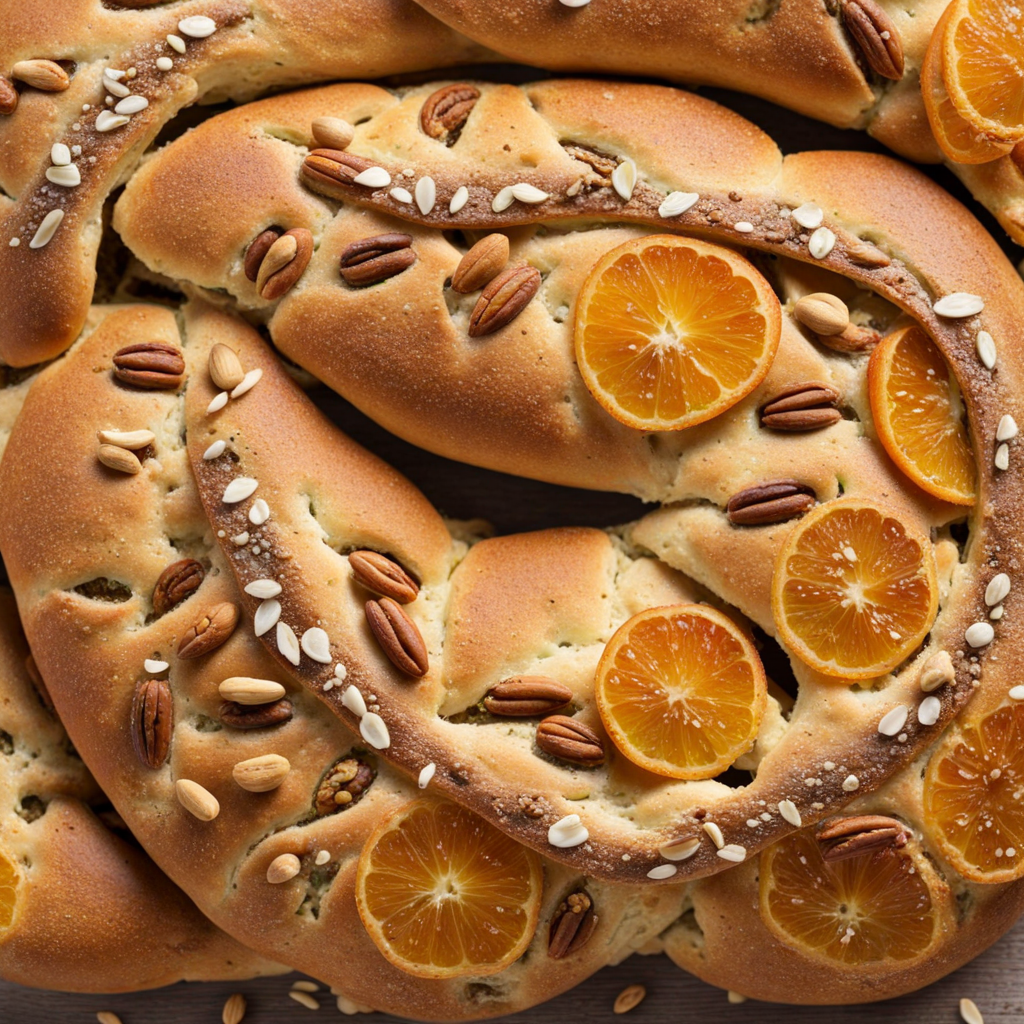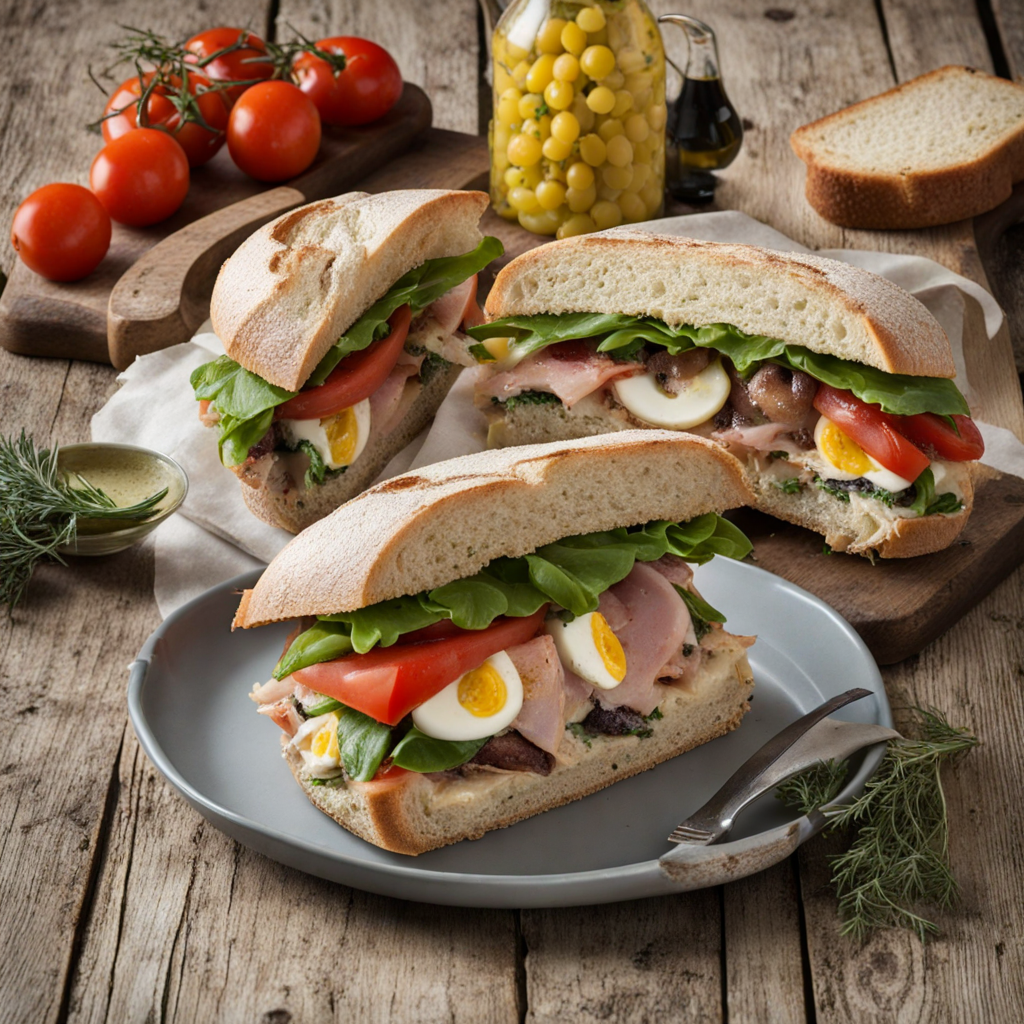Ratatouille
Ratatouille is a vibrant and hearty vegetable dish that hails from the Mediterranean region, particularly popular in French cuisine, yet it has deep roots and variations across neighboring regions, including Monaco. This delightful dish is an orchestra of colors and flavors, featuring a medley of fresh vegetables such as eggplant, zucchini, bell peppers, and tomatoes, all sautéed to perfection. The ingredients are often enhanced with aromatic herbs like thyme, basil, and rosemary, which infuse the dish with a fragrant essence that captures the essence of the sun-drenched Mediterranean landscape. In Monaco, Ratatouille is not just a dish; it is a celebration of the local produce and culinary traditions. The vegetables are typically diced into uniform pieces and cooked slowly to allow their natural sweetness to develop, creating a beautifully melded flavor profile. The dish can be served warm or at room temperature, making it a versatile option for any meal. It’s often paired with crusty bread, polenta, or as a side to grilled meats, enhancing the overall dining experience with its rustic charm. This dish is not only a delight for the palate but also a feast for the eyes. The vibrant colors of each vegetable create a visually appealing presentation, embodying the essence of Mediterranean cuisine. Ratatouille can also be enjoyed as a vegetarian main course or a side dish, making it a perfect choice for those seeking a healthy yet indulgent culinary experience. With each bite, you are invited to explore the rich tapestry of flavors that reflect the beautiful coastal landscapes of Monaco.
How It Became This Dish
The History of Ratatouille: A Culinary Journey from Monaco Ratatouille is often regarded as a quintessential dish of French cuisine, but its roots can be traced back to the broader Mediterranean culinary traditions that span across southern France and into neighboring regions. While it is commonly associated with Provence, the dish also carries historical significance in the nearby principality of Monaco, where the confluence of Italian and French influences has shaped its identity. #### Origins of Ratatouille The word "ratatouille" derives from the French verb "ratatouiller," which means "to stir up." This etymology reflects the dish's method of preparation, which involves sautéing various vegetables. The origins of ratatouille can be traced back to the rustic cooking practices of the region, where farmers would use seasonal produce to create hearty, nourishing meals. The earliest known version of ratatouille may have emerged in the late 18th century, though similar vegetable stews have existed for centuries. The region's warm climate allows for a bountiful harvest of vegetables such as tomatoes, zucchini, eggplant, bell peppers, and onions – all of which are essential components of ratatouille. In Monaco, located on the French Riviera, the dish was influenced by both French and Italian cuisines, with its use of fresh ingredients and olive oil highlighting the Mediterranean lifestyle. #### Cultural Significance Ratatouille not only showcases the agricultural bounty of the region but also embodies the essence of Mediterranean cooking, which emphasizes simplicity, freshness, and seasonality. In Monaco, the dish reflects the cultural melting pot that characterizes the principality. The proximity to Italy has led to shared culinary practices, and ratatouille stands as a testament to this blend of cultures. In a broader sense, ratatouille represents the peasant food tradition that elevates humble ingredients into a delicious and satisfying meal. It is a dish that transcends social classes; originally made by rural families, it has been embraced by the upper echelons of society and gourmet cuisine alike. This democratization of food is particularly evident in the way ratatouille has been adapted and interpreted by chefs around the world. #### Development Over Time The development of ratatouille as a recognized dish took several turns throughout history. Initially, it was a simple vegetable stew, with variations based on available ingredients and regional preferences. Over time, as culinary techniques evolved, so did the preparation and presentation of ratatouille. In the late 19th century, ratatouille began to gain popularity outside its rustic origins. With the advent of the French culinary movement and the increasing interest in regional dishes, chefs began to refine the recipe. The introduction of techniques such as confit and the use of herbs like thyme and basil added depth to the flavors. The mid-20th century marked a significant turning point for ratatouille. The dish gained international fame, particularly after the rise of nouvelle cuisine, a movement that emphasized fresh ingredients, artistic presentation, and lighter cooking methods. Chefs like Paul Bocuse and Alain Chapel, who were at the forefront of this movement, elevated ratatouille to a symbol of French culinary artistry. They began to serve it not just as a side dish but as a centerpiece in its own right. The popularity of ratatouille surged even further in the 21st century, particularly with the success of the 2007 Pixar animated film "Ratatouille." The movie tells the story of a rat named Remy who dreams of becoming a chef in Paris. It brought ratatouille into the global spotlight, introducing millions to the dish and its rich cultural heritage. The film's portrayal of the dish as a symbol of creativity and passion resonated deeply with audiences, solidifying ratatouille's place in popular culture. #### Modern Interpretations and Variations In contemporary cuisine, ratatouille has continued to evolve. While the traditional recipe includes sautéed vegetables, modern interpretations have seen the dish presented in various forms. For instance, some chefs have opted for a more artistic presentation, layering vegetables in an intricate manner, as popularized by the "confit byaldi" technique showcased in "Ratatouille." This version emphasizes the visual appeal of the dish, transforming it into a culinary work of art. Additionally, the rise of plant-based diets and vegetarianism has further popularized ratatouille, making it a staple in health-conscious menus. Its versatility allows it to be served hot or cold, as a main dish, side dish, or even as a filling for crepes and tart shells. #### Ratatouille in Monaco Today In Monaco, ratatouille remains a beloved dish, often found in local bistros and gourmet restaurants alike. Its presence on menus is a nod to the principality’s culinary heritage, where chefs take pride in sourcing local produce and honoring traditional recipes. Variations may include the addition of local seafood or herbs unique to the region, showcasing the creativity of Monégasque chefs. Moreover, ratatouille is often featured during the summer months when the vegetables are at their peak freshness, embodying the spirit of seasonal cooking. The dish is served at family gatherings and celebrations, reinforcing its cultural significance as a comfort food that brings people together. #### Conclusion Ratatouille is much more than just a vegetable stew; it is a culinary emblem that captures the essence of Mediterranean cooking and the rich cultural tapestry of regions like Monaco. From its humble beginnings as a peasant dish to its elevation in fine dining, ratatouille tells a story of resilience, innovation, and the timeless appeal of fresh, wholesome ingredients. As the world continues to embrace diverse culinary traditions, ratatouille stands as a delicious reminder of the importance of heritage, creativity, and the joy of sharing food with loved ones.
You may like
Discover local flavors from Monaco


